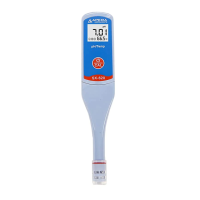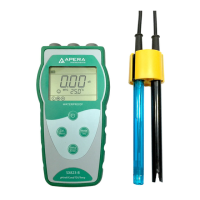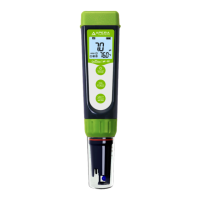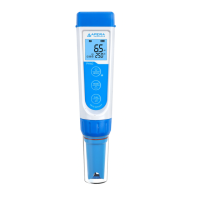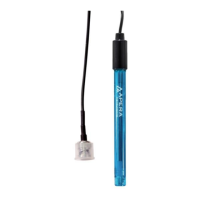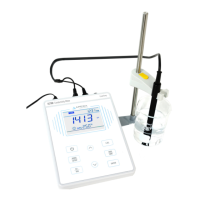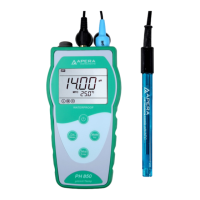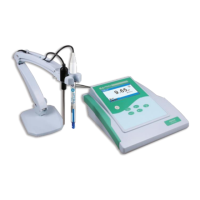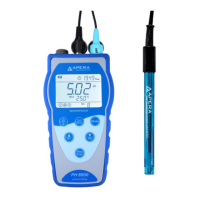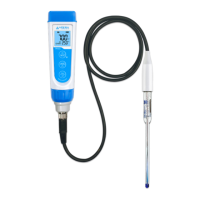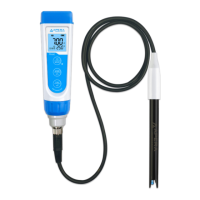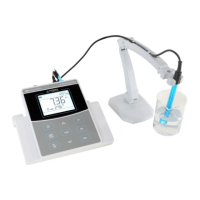1) Polarize the meter for 15 minutes, and then perform the saturated oxygen calibration
according to the 4.2.
2) Place the electrode into zero-oxygen water, press key to enter calibration mode.
When the stabilized reading is 0.02 ppm to 0.15 ppm after 5 minutes, press key
again to finish the calibration, then flashing 0.0% will show up, the calibration will be
finished in several seconds and 0.00 ppm will show up. Rinse off the electrode with
distilled water afterwards.
3) If the reading is less than 0.02 ppm after 5 minutes, it means the electrode is in good
condition and there is no need to perform zero oxygen calibration. Just press
key to return to measurement mode.
4) If the reading is greater than 0.15 ppm after 5 minutes, it’s time to replace the
membrane cap according to section 4.5.4 or remove the membrane cap and use the
polishing paper (DO504) to lightly polish the gold cathode according to section 4.5.3.
Then perform the saturated air calibration and zero oxygen calibration before
measuring.
4.7 Salinity Calibration
Dissolved oxygen is also affected by salinity in water. The meter has automatic salinity
compensation, and the salinity electrode is pre-calibrated before leaving the factory. In
general, there is no need to perform salinity calibration. Salinity calibration is only
needed when replacing a new electrode. For the procedure of salinity calibration,
please refer to 4.9.3 in P2.
For the salinity electrode installed in DO electrode (see picture 4-1), its surface is plated
with a layer of platinum black to reduce electrode polarization. When cleaning salinity
electrode, never brush it otherwise the coating will be peeled off. Just rinse it off by
swirling in pure water to remove contaminants. For organic contaminants, rinse off with
warm water containing detergent or alcohol.
4.8 Barometric pressure manual compensation
Dissolved oxygen is also affected by barometric pressure. The meter has the function
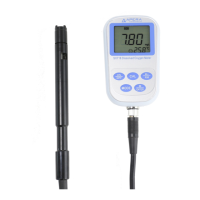
